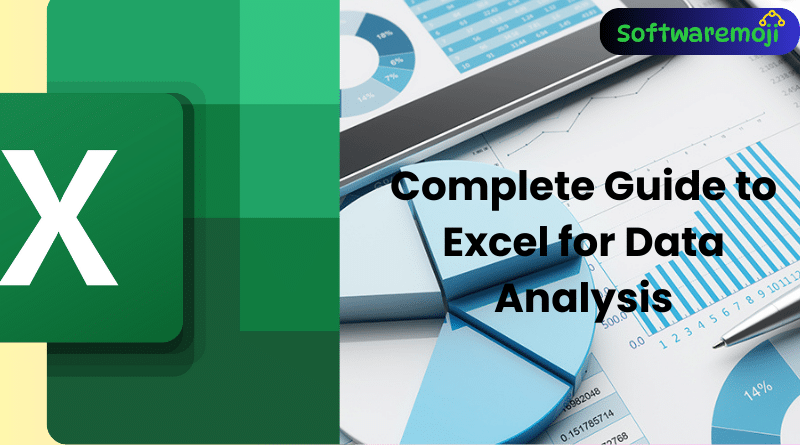
Complete Guide to Excel for Data Analysis
1. Introduction to Excel for Data Analysis
Complete Guide to Excel for Data Analysis: Excel is a powerful spreadsheet tool used for data storage, manipulation, and visualization. It consists of 1,048,576 rows and 16,384 columns (A to XFD), making it ideal for handling large datasets Complete Guide to Excel for Data Analysis
Why is Excel Important in Data Analytics?
- Used in businesses for financial modeling, reporting, and decision-making.
- Automates complex calculations and helps in dashboard creation.
- Provides tools for data cleaning, transformation, and visualization.
Key Features in Excel for Data Analysis
Complete Guide to Excel for Data Analysis
- Pivot Tables – Quickly summarize and analyze large datasets.
- Charts – Visualize trends and patterns in data.
- Built-in Functions – Perform calculations and data manipulations.
- Data Cleaning Tools – Handle missing values, remove duplicates, and format data efficiently.
2. Basic Excel Functions for Data Analysis
Complete Guide to Excel for Data Analysis
Arithmetic Functions
- SUM(range): Adds up values in a selected range.
- AVERAGE(range): Returns the mean of a range.
- MIN(range), MAX(range): Finds the smallest and largest values.
Text Functions
- LEFT(text, num_chars), RIGHT(text, num_chars), MID(text, start, num_chars): Extract specific portions of text.
- LEN(text): Counts characters in a text string.
- TRIM(text): Removes extra spaces from text.
- CONCATENATE(text1, text2, …) / TEXTJOIN(delimiter, ignore_empty, text1, text2, …): Joins multiple text values.
Logical Functions
- IF(condition, value_if_true, value_if_false): Returns different outputs based on a condition.
- AND(condition1, condition2, …), OR(condition1, condition2, …): Checks multiple conditions.
- NOT(condition): Reverses a condition’s result.
Lookup Functions
- VLOOKUP(value, table, column, [range_lookup]): Searches for a value in a vertical column.
- HLOOKUP(value, table, row, [range_lookup]): Searches for a value in a horizontal row.
- INDEX(array, row, [column]): Returns the value at a specified position.
- MATCH(lookup_value, lookup_array, [match_type]): Finds the position of a value in an array.
Date & Time Functions
- TODAY(), NOW(): Returns the current date or date & time.
- YEAR(date), MONTH(date), DAY(date): Extracts year, month, and day from a date.
- DATEDIF(start_date, end_date, unit): Calculates the difference between two dates.
3. Data Cleaning in Excel
Complete Guide to Excel for Data Analysis Key Techniques for Data Cleaning
- Removing Duplicates
- Go to Data → Remove Duplicates to eliminate redundant values.
- Go to Data → Remove Duplicates to eliminate redundant values.
- Handling Missing Values
- Use Find & Replace to fill empty cells with default values.
- Apply IF functions to replace missing values dynamically.
- Use Find & Replace to fill empty cells with default values.
- Text to Columns
- Split text-based data into multiple columns using delimiters.
- Split text-based data into multiple columns using delimiters.
- Find & Replace
- Quickly correct or update data values.
- Quickly correct or update data values.
- Data Validation
- Restrict input to specific formats (e.g., numbers only, date ranges).
- Restrict input to specific formats (e.g., numbers only, date ranges).
- Conditional Formatting
- Highlight data using color scales, icons, and data bars for better insights.
- Highlight data using color scales, icons, and data bars for better insights.
4. Pivot Tables & Pivot Charts for Data Analysis
Creating Pivot Tables
- Select dataset → Go to Insert → PivotTable.
- Drag & drop fields into Rows, Columns, and Values.
Sorting & Filtering Data
- Use Pivot Table filters to analyze different subsets of data.
Grouping & Summarizing Data
- Summarize data by month, quarter, year, or category for better analysis.
Creating Pivot Charts
- Convert Pivot Table data into interactive charts for better visualization.
5. Data Visualization in Excel
Types of Charts for Data Representation
- Bar Charts – Best for comparisons.
- Line Charts – Used to display trends over time.
- Pie Charts – Shows proportions in a dataset.
Using Conditional Formatting for Data Insights
- Apply color scales, icon sets, and data bars to highlight trends.
Advanced Chart Customization
- Add trend lines, adjust axis scales, and format labels for clarity.
6. Advanced Excel for Data Analysis
Data Analysis ToolPak
- A built-in add-in for advanced statistical analysis such as regression, correlation, and moving averages.
Goal Seek & Solver
- Goal Seek: Finds required input values for a specific target outcome.
- Solver: Optimizes a formula by adjusting multiple variables.
Scenario Manager
- Compares Best-Case, Worst-Case, and Expected business scenarios.
Power Query & Power Pivot for Data Automation
- Power Query: Automates data cleaning and transformation.
- Power Pivot: Helps handle large datasets and complex calculations.
Complete Guide to Excel for Data Analysis Why Learn Excel for Data Analysis?
✅ Master essential functions for data manipulation.
✅ Automate repetitive tasks to improve efficiency.
✅ Create interactive dashboards and reports.
✅ Gain expertise in Pivot Tables, Power Query, and Solver.
